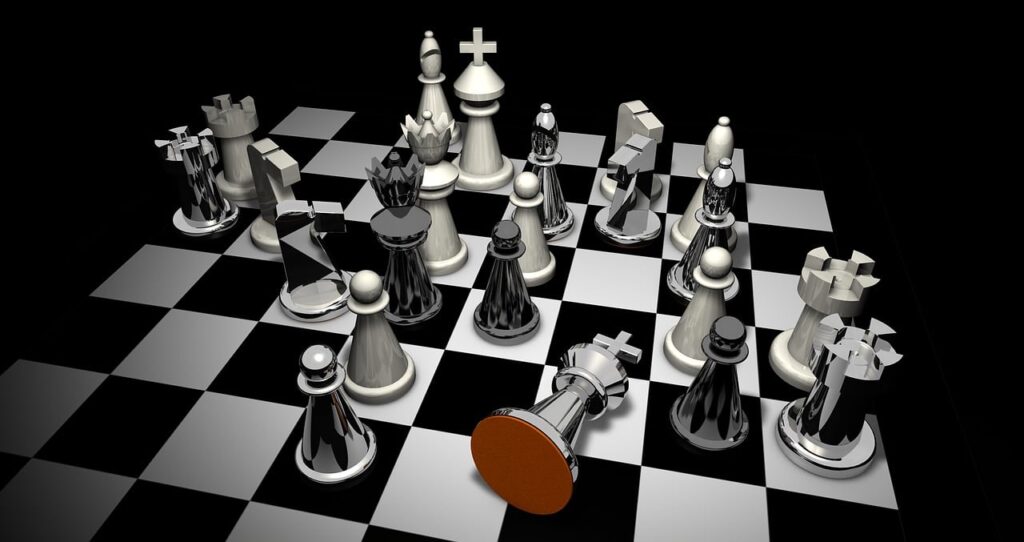
The number four, a ubiquitous integer following three and preceding five, holds a remarkable and often underestimated significance across an array of human endeavors and natural phenomena. From its earliest graphical representations to its complex implications in advanced mathematics, the inherent properties and symbolic resonance of four have shaped our understanding of the world, influencing everything from the very structure of our universe to the fundamental building blocks of life itself.
This seemingly simple digit, often encountered in elementary arithmetic, reveals a surprising depth upon closer inspection. Its consistent presence in diverse fields — mathematics, science, culture, and religion — underscores its fundamental role as a conceptual cornerstone. This article delves into the multifaceted aspects of the number four, examining its evolution, its mathematical intricacies, and its critical contributions to our scientific and conceptual frameworks.
We embark on an extensive exploration, meticulously dissecting the various dimensions through which the number four asserts its importance. By meticulously examining its historical development as a numeral, its foundational mathematical attributes, its application in complex theorems and abstract algebraic constructs, its geometric interpretations, and its pivotal role in describing the physical universe and celestial mechanics, we aim to provide a comprehensive understanding of why four remains an indispensable figure in our collective knowledge.

1. **The Origin and Evolution of the Digit Four**The visual representation of the number four has undergone a fascinating evolution, mirroring the development of writing systems and the pursuit of efficiency in human communication. Initially, early numeral systems, such as Brahmic numerals, simply depicted numbers one, two, and three with an equivalent number of lines. However, the task of writing four distinct lines proved cumbersome and led to innovative simplifications.
The Brahmin Indians ingeniously transformed the four lines into a cross-like figure, resembling the modern plus sign, which marked a significant departure from additive line-based representation. This cross served as the conceptual antecedent for the contemporary digit. Subsequent Indian scripts, including the Shunga, introduced a horizontal line atop this cross, further refining the symbol.
Over centuries, the Kshatrapa and Pallava scripts continued to evolve the digit, sometimes with an emphasis on aesthetic or calligraphic flourishes, where the speed of writing became a secondary consideration. The Arabs, however, prioritizing efficiency, streamlined the cross concept into a single stroke, connecting what they perceived as the “western” and “northern” ends and concluding with a curve on the “eastern” end. This cursive Arabic form then influenced European rendition, where the finishing curve was gradually omitted, leading to a character that closely resembles the original Brahmin cross, yet with a more angular, less cursive form, as seen in many modern typefaces. The modern handwritten forms of four continue to reflect these historical influences, showcasing upward loops or open tops in digital displays.
Read more about: 14 Powerful Books to Reshape Your Mindset: Strategies for Success, Resilience, and Unlocking Your Full Potential
2. **Four’s Fundamental Mathematical Identity**In the realm of mathematics, four is a number laden with foundational properties. As a natural number, it follows three and precedes five, serving as a basic unit in counting and enumeration. Beyond its cardinal utility, four possesses unique classifications that underpin more complex mathematical theories and structures.
It stands as the smallest composite number, a distinction it earns because it has proper divisors other than one and itself—namely, one and two. This property immediately sets it apart from prime numbers. Furthermore, four is recognized as a square number, being the product of an integer multiplied by itself (2 x 2 = 4), and is the second such number after one. It is also the smallest squared prime (p²), reinforcing its composite nature derived from prime factors.
Four’s aliquot sum, which is the sum of its proper divisors, is three—a prime number itself. This leads to an aliquot sequence of four members (4, 3, 1, 0), highlighting an interesting numerical chain. Its prime factorization is simply two multiplied by two. Intriguingly, four is the smallest composite number that is equal to the sum of its prime factors, earning it the title of the smallest Smith number. The unique numerical identity of four, extending to basic arithmetic operations where 2 + 2 = 2 x 2 = 2², illustrates its balanced and fundamental role in number theory.

3. **Key Mathematical Theorems of Four**The number four is not merely a basic integer; it is a critical component in several profound mathematical theorems that have shaped our understanding of graphs, numbers, and geometric structures. Among these, the Four-Color Theorem stands as a monumental achievement, addressing a seemingly simple cartographic problem with deep implications for graph theory.
This theorem asserts that any planar graph, or equivalently, any flat map of two-dimensional regions such as countries, can be colored using a maximum of four colors in such a way that no two adjacent regions share the same color. The necessity of four colors is demonstrated by maps where three are insufficient, making four the minimum and sufficient number. Its proof was a significant milestone, famously requiring computational assistance, and it highlights four’s role in discrete mathematics and combinatorial problems, particularly concerning connectivity and distinction.
Another significant theorem is Lagrange’s Four-Square Theorem, which states that every positive integer can be expressed as the sum of at most four square numbers. While some numbers, like seven, cannot be written as the sum of three squares, the theorem guarantees that four squares will always suffice. This theorem bridges number theory with the properties of squares, showcasing four as a maximum bound for representing integers through a specific summation, underscoring its broad applicability in abstract number representation.
Read more about: Unprecedented Views: Black Hole Collisions Validate Einstein and Hawking’s Enduring Cosmic Predictions
4. **Geometric Significance: Quadrilaterals and Tetrahedrons**In geometry, the number four is fundamental to defining shapes and structures, both in two and three dimensions. A four-sided plane figure is universally recognized as a quadrilateral or quadrangle, sometimes also referred to as a tetragon. This category encompasses a rich variety of shapes, including rectangles, squares, rhombuses, and kites, each with distinct properties yet united by their four sides and four angles. The division of a circle by four lines results in right angles, establishing four as a base number for plane geometry and foundational to concepts like cardinal directions and seasons, which are often visualized spatially.
Moving into three dimensions, four is central to the definition of the simplest polyhedron: the tetrahedron. A solid figure with four faces and four vertices, the tetrahedron represents the absolute minimum number of faces and vertices a polyhedron can possess. Its regular form, composed of four equilateral triangular faces, is the simplest of the Platonic solids, which are convex regular polyhedra. The regular tetrahedron is unique among Platonic solids for being self-dual, meaning its dual polyhedron is another tetrahedron, highlighting a remarkable symmetry.
Beyond its simplicity, four-dimensional space exhibits a unique characteristic regarding convex regular figures. While there are infinitely many convex regular polygons (2D) and five convex regular polyhedra (3D), four-dimensional space hosts six convex regular polychora, a number that then reduces to three for all higher-dimensional spaces. This specific numerical progression underscores four’s pivotal role in defining the complexity of regular geometric forms as dimensions increase.

5. **Four in Abstract Algebra and Division Algebras**In the realm of abstract algebra, the number four continues to manifest its significance, particularly in defining fundamental group structures and the properties of number systems. The Klein four-group, for instance, is a pivotal concept: it represents the smallest non-cyclic group, comprising four elements. This group is fundamental in the study of group theory, serving as a simple yet important example for understanding symmetries and algebraic structures that are not generated by a single element.
Beyond groups, four also dictates a critical boundary in the theory of division algebras. A theorem by Ferdinand Georg Frobenius states that the maximum number of dimensions of a real division algebra is four. This profound result means that beyond the real numbers (one dimension), complex numbers (two dimensions), there are only the quaternions (four dimensions) that form a division algebra over the real numbers. Higher-dimensional algebras, such as the octonions (eight dimensions), lose associativity, distinguishing the quaternions as the highest-dimensional associative real division algebra. This constraint imposed by the number four is a cornerstone of advanced algebra and has implications for fields like theoretical physics.
Furthermore, in the context of alternating groups, which are subgroups of symmetric groups, the alternating group A_n is not simple for values n ≤ 4. This specific characteristic of small values, particularly n=4, again highlights four as a boundary or a point of transition in the complexity and structure of these significant algebraic objects. The interplay of four with these abstract concepts solidifies its status as more than just a counting number, but as a definitional constant in the very language of algebra.

6. **The Four Dimensions of Spacetime and Fundamental Forces**In the grand tapestry of physics, the number four emerges as a cornerstone, particularly in our most fundamental theories of the universe. Albert Einstein’s revolutionary theories of special and general relativity fundamentally recast our understanding of reality by treating nature as four-dimensional. Rather than perceiving space and time as separate entities, these theories integrate the three dimensions of space—length, width, and height—with the single dimension of time, coalescing them into a unified four-dimensional manifold known as spacetime. This conceptual framework is indispensable for describing gravity and the motion of objects at high speeds or in strong gravitational fields, making four an intrinsic descriptor of cosmic geometry.
Moreover, the very forces that govern the interactions within our universe are encapsulated by the number four. Physicists recognize four fundamental forces: electromagnetism, gravity, the weak nuclear force, and the strong nuclear force. These four forces dictate everything from the attraction between planets and stars to the binding of atomic nuclei and the decay of subatomic particles. Understanding these four interactions is crucial for constructing any comprehensive theory of everything, underscoring four’s role in delineating the foundational dynamics of the cosmos.
Even at the subatomic level, the number four appears. An alpha particle, which is essentially a helium nucleus, consists of four hadrons—two protons and two neutrons. This composition further illustrates how four permeates the very structure of matter and energy, from the largest cosmic scales to the smallest quantum interactions. The consistent recurrence of four in these core physical principles highlights its deep-seated importance in our scientific models of reality.

7. **Astronomical Structures and Cycles Defined by Four**Astronomy, the study of celestial objects and phenomena, frequently employs the number four to categorize and describe the vastness of the cosmos. Our own Solar System provides prominent examples, starting with its planetary composition. It is distinctly divided into four terrestrial (or rocky) planets—Mercury, Venus, Earth, and Mars—which reside closer to the Sun and possess solid surfaces. Beyond these, separated by the asteroid belt, lie the four giant gas planets: Jupiter, Saturn, Uranus, and Neptune, characterized by their massive size and gaseous compositions. This natural division into two groups of four shapes our understanding of planetary formation and diversity.
Beyond individual planets, four also appears in more ancient and long-term celestial mechanics, such as the Saros series, which describes the cyclical recurrence of solar and lunar eclipses. For instance, Saros series 4 for solar eclipses began on May 6, 2731 B.C.E., and concluded on June 13, 1451 B.C.E., spanning 1280.14 years and encompassing 72 solar eclipses. Similarly, Saros series 4 for lunar eclipses had its own long history, starting on October 6, 2646 B.C.E., and ending on April 2, 1131 B.C.E., enduring for 1514.53 years and comprising 78 lunar eclipses. These astronomical cycles, defined and cataloged by the number four, illustrate its role in tracking predictable, long-duration cosmic events.
Furthermore, in the conventional naming system for celestial bodies, the Roman numeral IV often designates the fourth-discovered satellite of a planet or minor planet, as exemplified by Jupiter IV. In stellar classification, the Roman numeral IV also denotes a subgiant star within the Yerkes spectral classification scheme. These standardized uses in astronomical nomenclature underscore the systematic and categorizing power of the number four, reinforcing its omnipresence in how we organize and interpret the celestial sphere.
Read more about: Clash of the Titans: An In-Depth Look at China’s J-20 and America’s F-22 in the Race for Air Dominance
8. **The Number Four in Biological Systems**The pervasive influence of the number four extends deeply into the intricate structures and processes of biological life, forming a bedrock for many fundamental components. At the most granular level of genetic information, four is the number of the most common nucleotides found in DNA and RNA: Adenine, guanine, cytosine, and thymine (with uracil substituting for thymine in RNA). These four bases form the crucial genetic alphabet that dictates the blueprint of all known life.
Beyond the microscopic, four frequently manifests in the gross anatomy and physiological functions of diverse organisms. Many chordates, for instance, are classified as Tetrapods, a group characterized by having four feet, legs, or leg-like appendages, which enables varied forms of locomotion. In mammals, the heart, a vital organ for circulatory function, invariably consists of four distinct chambers, ensuring efficient blood flow. Furthermore, numerous mammalian species, particularly those belonging to the Carnivora and Ungulata orders, utilize four fingers or hooves for movement.
The recurring pattern of four continues into other biological domains and human physiology. Most insects, with the notable exception of flies, possess four wings, enabling flight. For humans, the concept of four is evident in the classification of blood groups (A, B, O, and AB), critical for medical compatibility. Moreover, a typical mature human dentition includes four canines, four incisors, and four wisdom teeth, highlighting four’s consistent presence even within individual anatomical details.
Read more about: Unpacking the Building Blocks of Thought: An Accessible Deep Dive into the World of Concepts
9. **Four’s Fundamental Role in Chemistry**In the realm of chemistry, the number four proves equally indispensable, especially concerning the elemental composition and structural integrity of matter. Carbon, the basis of organic life on Earth, exhibits a characteristic normal valence of four. This tetravalent nature allows carbon atoms to form strong, stable bonds with up to four other atoms, creating complex molecular structures essential for biological systems. Diamond, one of carbon’s natural allotropes, exemplifies this with a tetrahedral crystal bond structure, contributing to its status as the hardest known naturally occurring material.
Silicon, another element of immense geological significance, shares carbon’s valence of four. This property allows silicon compounds to form the vast majority of the Earth’s crust, contributing to the formation of silicates, fundamental to rocks and minerals. The ability of both carbon and silicon to form four stable bonds underlies the diversity and stability of compounds that constitute much of our planet’s physical and biological environment.
Beyond these structural roles, four appears in basic atomic properties and states of matter. Beryllium, for instance, has an atomic number of four, crucial to its chemical identity. Furthermore, chemistry traditionally identifies four basic states of matter: solid, liquid, gas, and plasma. These distinct phases govern how substances interact and transform under varying physical conditions, providing a comprehensive framework for understanding material properties.

10. **Technological Applications and Ingenuity of Four**The omnipresence of the number four extends robustly into the designed world of technology and human innovation, influencing everything from materials identification to structural engineering and digital communication. In recycling, four serves as the resin identification code for low-density polyethylene (LDPE), a common plastic. This standardized numerical designation facilitates efficient sorting and processing. Furthermore, a glance around any living space reveals that furniture, such as tables and chairs, usually has four legs, providing a stable and functional base.
Rectangular forms, inherently defined by four angles and four sides, are ubiquitous in technological and architectural design due to their effective form and capability for close adjacency. This geometric efficiency makes them ideal for constructing everything from houses and rooms to tables, bricks, sheets of paper, screens, and film frames, where modularity is paramount. In the printing industry, the four-color process, CMYK (Cyan, Magenta, Yellow, and Key/black), forms the foundation for reproducing a full spectrum of colors, essential for virtually all modern printed materials.
Digital and automotive technologies also prominently feature the number four. In the Rich Text Format (RTF) specification, language code 4 is designated for the Chinese language, illustrating its role in digital localization. A “nibble,” comprising four bits, represents half a byte and is a fundamental unit in computer architecture. In transport, most vehicles, notably cars and light commercial vehicles, are designed with four road wheels, optimizing stability and traction. Automotive companies, such as Audi, even brand their four-wheel drive (4WD) technologies with the Italian word “Quattro,” reflecting the core importance of this configuration.
Read more about: Unearthing Earth’s Ancient Narratives: How Paleontology Unravels Mysteries Like Marine Fossils on Mountain Peaks
11. **Cultural and Religious Symbolism of Four**Across human societies, the number four has woven itself into the fabric of cultural beliefs and religious doctrines, embodying profound symbolic meanings that resonate with order, creation, and completeness. In Judaism, the Tetragrammaton (YHVH), the sacred four-letter name of God, holds immense spiritual weight. The narrative of Genesis depicts four rivers flowing from the Garden of Eden: Pishon, Gihon, Hiddekel (Tigris), and P’rat (Euphrates), symbolizing life-giving abundance.
Four Matriarchs—Sarah, Rebeccah, Leah, and Rachel—stand as foundational figures in Judaism. Specific observances like Sukkot involve the “Four Species,” and Passover entails the “Four Cups of Wine,” “Four Questions,” “Four Sons,” and “Four Expressions of Redemption,” all reinforcing four’s structural significance in ritual and narrative.
In Islam, the “Four Archangels”—Jibraeel (Gabriel), Mikaeel (Michael), Izraeel (Azrael), and Israfil (Raphael)—serve as key intermediaries. Christian theology similarly imbues four with distinct meaning through the “Four canonical Christian Gospels”—Matthew, Mark, Luke, and John—which provide comprehensive accounts of Jesus’ life. The apocalyptic vision in the Book of Revelation features the “Four Horsemen of the Apocalypse”—War, Famine, Pestilence, and Death—each representing a powerful force. Beyond these Abrahamic traditions, Buddhism’s central tenets are articulated through the “Four Noble Truths.” For the Zia tribe, four is a profoundly sacred number. This widespread symbolism highlights how four transcends mere numerical value, becoming a vessel for complex cultural narratives and spiritual understandings.
Read more about: Beyond the Headlines: The Enduring Legacy of Andrew—From Ancient Apostle to Modern-Day Pop Culture Sparks
12. **Four in Logic and Philosophical Thought**The number four has profoundly influenced the development of human logic and philosophical inquiry, often serving as a structural or categorical principle for organizing complex ideas. Its symbolic meanings are deeply linked to the cross and the square, signifying “what was solid, what could be touched and felt.” This ancient association positioned four as an “outstanding symbol of wholeness and universality,” drawing diverse concepts into a coherent framework. Historically, leaders were called “lord of the four suns” or “lord of the four quarters of the earth,” indicating comprehensive power.
In formal logic, the “Square of Opposition,” in both its Aristotelian and Boolean versions, fundamentally consists of four distinct forms: A (“All S is R”), I (“Some S is R”), E (“No S is R”), and O (“Some S is not R”). These four propositions define crucial relationships of contradiction, subalternation, and contrariety, forming a cornerstone of categorical logic. Aristotle himself proposed that there are essentially “four causes in nature”: the efficient cause, the matter, the end, and the form, providing a comprehensive framework for understanding phenomena.
Later philosophical giants continued to build upon this numerical foundation. Immanuel Kant’s table of judgments involves four three-way alternatives concerning Quantity, Quality, Relation, and Modality. Based on this, he constructed a table of four categories, each with three subcategories, mapping the fundamental structures of human understanding. Arthur Schopenhauer’s doctoral thesis, “On the Fourfold Root of the Principle of Sufficient Reason,” further exemplifies four’s analytical power. Even C.S. Peirce discussed “four basic methods of seeking to settle questions and arrive at firm beliefs”: tenacity, authority, a priori, and science, showcasing four’s consistent role in structuring epistemological approaches.
Read more about: Unpacking the Building Blocks of Thought: An Accessible Deep Dive into the World of Concepts

13. **The Harmonic Presence of Four in Music**Within the structured yet expressive world of music, the number four acts as a fundamental organizer, shaping rhythm, form, and instrumental composition. In Western music, “common time” is universally recognized as being constructed of four beats per measure, providing a rhythmic pulse that underpins countless compositions across genres. This 4/4 time signature is the most prevalent, offering a stable and easily grasped framework for melodic and harmonic development, contributing significantly to the accessibility and appeal of much music.
The compositional output of revered masters also echoes the significance of four. Johannes Brahms, one of the great Romantic composers, famously completed four numbered symphonies, each a monumental work celebrated for its depth and structural integrity. Furthermore, many orchestral and chamber works adhere to a traditional structure comprising typically four movements in a classical symphony or string quartet. This four-movement arc allows for a progression of moods, tempos, and thematic ideas, creating a complete and satisfying artistic journey.
Instrument design and ensemble formation also frequently revolve around the number four. String instruments like the violin, viola, cello, double bass, cuatro, and ukulele all feature four strings, allowing for a rich range of pitches and harmonies. The mandolin, similarly, is often configured with four pairs of strings. The concept of a “quartet,” an ensemble consisting of four members, is a cornerstone of chamber music. Even in popular culture, The Beatles were affectionately known as the “Fab Four,” immortalizing the power and synergy of a four-person group.
Read more about: Martial Solal, French Jazz Piano Virtuoso and Composer, Dies at 97, Leaving an Enduring Legacy of Innovation
14. **Four’s Pervasive Influence in Sports and Recreation**The competitive arena of sports and various forms of recreation frequently integrates the number four, using it to define scoring, player positions, team structures, and equipment specifications. In the sport of cricket, a “four” is a specific scoring event, awarding four runs when the ball crosses the boundary. A rare and celebrated achievement is a “double hat trick,” which involves taking four wickets in four consecutive balls.
Team sports also assign significant roles and points associated with four. In rugby union, the number 4 jersey is typically worn by one of the “lock forwards.” Rugby league similarly designates the number 4 to one of the “centres,” and importantly, four points are awarded for scoring a “try.” In American baseball, “4” represents the second baseman’s position. Basketball sees the number 4 assigned to the “power forward” position, and the highly anticipated “Final Four” refers to the last four teams remaining in the NCAA playoff tournament. A thrilling “4-point-play” occurs when a player completes a three-pointer while being fouled, earning an additional free-throw.
Beyond these, the number four defines equipment and specific event types. In rowing, a “four” refers to a boat designed for four rowers, which can be either a “coxless four” (4-) or a “coxed four” (4+). Even in football (soccer), the number 4 is often assigned to a “centre back,” a defensive anchor. These examples collectively demonstrate how four is an integral component in the rules, strategies, and cultural lexicon of competitive sports, shaping both gameplay and terminology.
From the intricate dances of subatomic particles to the grand sweep of cosmic cycles, and from the bedrock of mathematical theorems to the nuanced expressions of human culture and sporting prowess, the number four continuously asserts itself as an indispensable concept. It is a unifying thread that weaves through the diverse tapestries of our universe, a constant reminder of the underlying order and structure that defines our reality. Far from being a mere integer, four emerges as a fundamental constant, a silent architect in the grand design of everything we observe, understand, and create, inviting further exploration into its enduring mystery.









